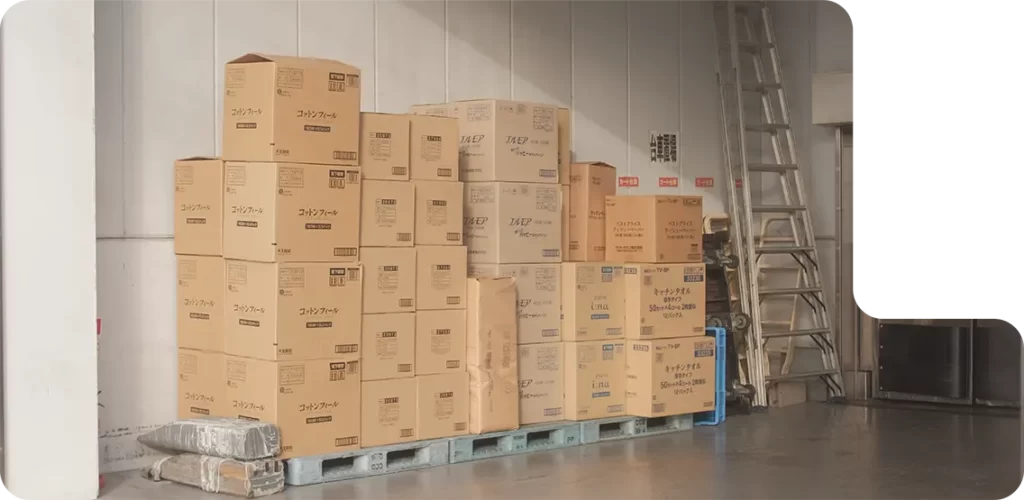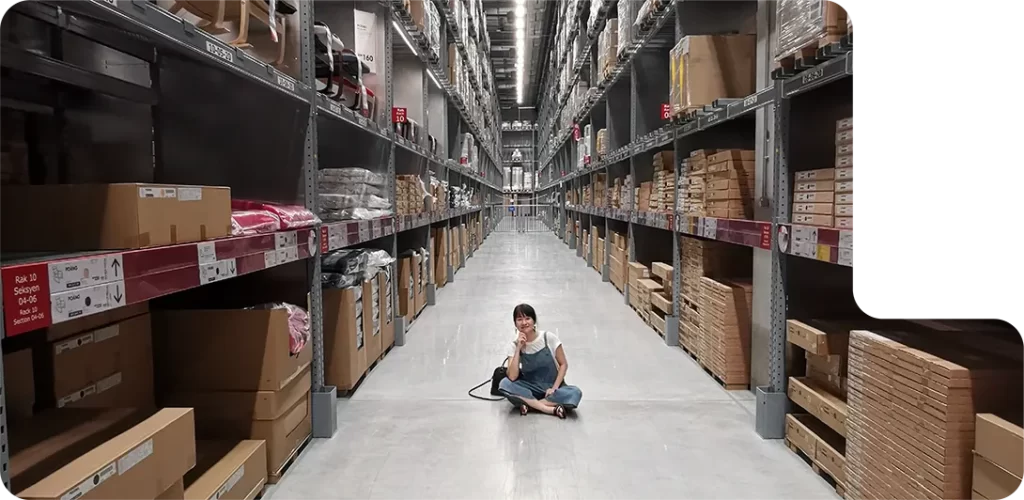Table of Contents
More Inventory Content
Get the latest e-commerce industry news, best practices, and product updates!
Table of Contents
More Inventory Content
Share This
Get the latest e-commerce industry news, best practices, and product updates!
Table of Contents
Share This
More Inventory Content
Get the latest e-commerce industry news, best practices, and product updates!
Inventory management — specifically, inventory maintenance, methods, and systems — is a popular topic in busy warehouses worldwide. Clients have become spoiled by the big lightning-fast order fulfillment capabilities. Therefore inventory replenishment is unquestionable.
Consequently, businesses should handle stock replenishment carefully; it’s an element that can influence the proper functioning of your products throughout your complete manufacturing chain. Let’s take a closer look at inventory replenishment and how it can impact your expanding company.

What Is Inventory Replenishment?
The process of shifting goods from storage facilities to picking shelves, or purchasing e-commerce stock from a seller to store it in warehouses or fulfillment facilities, is referred to as inventory replenishment, sometimes referred to as stock replenishment.
When the restocking process is managed correctly, there is enough stock on hand to pick and pack each purchase as soon as it arrives. One of the most critical logistics operations duties is inventory replenishment, which positively influences consumer satisfaction.

Inventory Replenishment vs. Inventory Control
The two most essential parts of inventory management are inventory control and replenishment. Inventory control entails keeping track of what’s already in your warehousing or retail location. Inventory control aids firms in properly organizing their goods, determining how much they have, and tracking each product. On the other hand, inventory replenishment aims to optimize stock restocking so that the business consistently has the right level of stock on hand to fulfill customer needs.

Why Is Inventory Replenishment Necessary for E-Commerce Sellers?
How rapidly inventory is refilled significantly impacts a digital business’s ability to satisfy client needs, fulfill expectations, and make a profit. Here are some reasons e-commerce merchants need to replenish their stock.
Prevents stock-outs
A stockout transpires when low inventory halts the purchase or delivery of an item and affects the distribution chain during the selling period.
Backorders are also probable, implying that a purchase has a delivery period for when the goods will be available. Backorders and stockouts can be pretty inconvenient for your consumers.
Keeping backup supply, safety stock, or contingency stockpiles on hand is the most straightforward way to avoid typical stockout problems. Eliminating stockouts is also a good idea if a distribution network problem emerges.
Prevents Overstocking
An intelligent inventory replenishment strategy can also assist in reducing the excess inventory of commodities that become unsellable if ignored for an extended period, including consumable goods or beauty products having expiry dates.
Overstocking, similarly to not having enough inventory, can negatively influence your business.
Restocking prematurely or without consideration for consumer or seasonal demands can lead to dead stock, which adds holding costs by enabling unsaleable commodities to sit in warehouses for a lengthy period.
The economic order quantity (EOQ) formula is a simple technique to discover the appropriate levels of stock to have on hand to match order demands, avoiding overstocking and expensive storage logistics.
By calculating EOQ, you may have a clearer idea of how much stock, including safety stock, you must have in store while maintaining e-commerce storage expenses low.
Reduces Shipping Costs
Assume you received a significant order from a customer. You’ll have to deploy a split shipment to fulfill the purchase request if one article is out of stock at the consumer’s nearest storage unit but is obtainable at another.
Delivering items from a single purchase in many shipments raises shipping charges, creates packing waste, and misuses customers. You can predict demand and estimate how much stock to retain at the stock keeping unit level at each storage location based on historical data.
It has the potential to lower transportation costs and improve last-mile deliveries. Furthermore, for this fulfillment method to work correctly, each distribution hub site must always be loaded with the correct quantity of merchandise.

How Inventory Replenishment Works
A team or a succession of teams will be assembled to supervise inventory based on the particular structure of your firm. These groups are typically warehouse managers or coordinators responsible for ensuring the company has enough stock to make or deliver products.
These groups can be divided into a range of specializations, with some specializing in inventory ordering methods as the firm develops and grows. Others deal with the brief; the latter are the specialists who check stock levels.
When the quantities fall below the pre-determined reorder level, the assigned team will notify the appropriate supply chain entities to restock the products. This happens with ready-to-sell merchandise and raw commodities purchased directly from the source.
Every professional storage facility has its system of restocking guidelines. These are usually movable based on the issue’s intensity, but they are written entirely after a requirement prediction is prepared.

What Influences Inventory Replenishment?
Unexpected incidents can change the status quo even for businesses with a well-planned inventory replenishment system.
Sales predictions are constantly subject to changing circumstances, such as swings in client demand. For instance, customers may lose interest in a previously popular product when a lower-cost alternative becomes accessible. Two common factors that influence inventory replenishment are as follows:
Limited Warehouse Capacity
The business’s ability to keep enough product to meet predicted demand may be limited due to a lack of inventory storage — or competing priorities for the available space. As an outcome, the company’s inventory replenishment strategies may need to be adjusted. It may be required, for instance, to order lesser quantities more regularly.
Supply-Chain Lead Times
Lead times in the distribution chain refer to the time it takes for a company to place orders and the goods to arrive. Supply-chain breakdowns can drastically increase lead times. Suppliers with a scarcity of raw materials, for instance, may fail to produce items on schedule, limiting your capacity to sell finished products to clients.

What Is Replenishment Stock?
Replenishment stock is merchandise purchased after a trading season has already started.
What Is Replenishment Effectuating?
Consumer preferences begin to affect stock levels across the organization once a marketing period begins: There may be an unanticipated spike in sales for red sunglasses in one place, which immediately sold out, while those identical glasses sit on the rack in another destination.
Replenishment aims to ensure the right item is available at the correct time for customers to optimize sales and cut expenses.

What Is Replenishment Time?
The interval between initiating a replenishment request and the replacement goods arriving on the shelf is replenishment time.
The higher the cost, the longer the refilling time. As is so often the way, the best solution is avoidance to reduce replenishment time.
There are various elements and factors to consider and track. Among the most common factors are:
- Time spent on production
- Time for packaging and delivery
- Order fulfillment for customers
- Processing time at the warehouse
Stock replenishment has a meaningful impact on GMROI (gross margin return on investment), regardless of the business size. Maintaining a solid replenishment system capable of handling the intricacy and demands of replenishment inventory becomes exceptionally crucial for retail enterprises with many retail channels and sites.

Inventory Replenishment Methods
Different merchants use different replenishment techniques depending on their company model, annual order volume, and goods. If your current replenishment plan isn’t working, try one of these three successful inventory replenishment approaches.
Reorder point method
Reorder points in your inventory assure that you have enough supplies on hand to match consumer demands. By ensuring that you always have a specific amount of things on hand, reorder junctures also give you more financial independence.
The reorder point equation (demand during lead time + safety stock) allows you to calculate the correct stock levels to meet customer requirements based on previous order data, so you know how often and when to refill.
Periodic inventory replenishment method
Inventory is refilled at regular periods using the periodic inventory restocking method. Regardless of how low stock may go before that moment, stock levels are only inspected at certain times or dates. This strategy is primarily employed in facilities with a lot of storage.
Top-off method
Top-off replenishment, also known as lean time restock, capitalizes on slow picking processes to bring inventory levels forward to acceptable standards at pick sites. Every pre-determined picking point is filled up using minimal and maximum criteria during these slow periods.
Like those with high-demand, greater SKUs, businesses with brief picking periods benefit from the top-off restocking strategy. This method helps increase efficiency during peak times by taking full advantage of sluggish demand periods to top off stock levels in the forward pick sites.
Demand strategy
For inventory replenishment, several organizations employ the demand strategy. It’s as straightforward as it comes. Whatever is required to meet demand is restocked or reordered.
That, too, necessitates planning and preparation to guarantee that you’re ready for future demand shifts.
You’ll need a buffer or safety stock to make your business versatile enough to handle these market movements. Safety stock is a stock buffer that allows your business to respond to wild market fluctuations, lowering the risk of stockouts if prices or demand increases unexpectedly.
Lot-sizing methods
You can choose between a variety of inventory replenishment techniques. The trade-off between the SKU’s carrying costs and the expense of purchasing from the supplier determines lot-sizing procedures. Businesses that use periodic replenishment must also consider the time between review points.
The lot sizing method employs various other ways, such as:
- Fixed order quantity: Each time you repurchase, you’ll get a specific number of things.
- Lot-by-lot: A precise quantity of products is ordered to meet demand within a particular time range, taking the order lead factor into consideration. Discrete order quantity is another term for lot-by-lot.
- Economic order quantity (EOQ): The amount ordered is determined by the expenses of transporting and collecting the commodity.
- Period order quantity: You can calculate the set number of possible cycles the stock will cover using EOQ.
- Periods of supply: A volume of inventory sufficient to meet a product’s demands for a specified number of future intervals.
- Least unit cost: The cost of purchasing and inventory carrying is factored into the price of each lot size, then divided by the number of units. The amount ordered is the lot size with the least per-unit cost.
- Least total cost: Comparing holding charges with ordering costs for different lot sizes yields the order quantity. The amount purchased is the lot size with the nearest (roughly similar) overhead and order expenses.
- Part period balancing: The quantity of products ordered is determined by total demand up until the point at which the expenses of maintaining and purchasing the product are most evenly distributed. It entails determining when the cost of handling acquired inventory surpasses the cost of ordering by computing the Economic Part-Period, a typical value used mainly for lot-sizing reasons. The order quantity is predicated on avoiding unnecessary expenses by calling only enough to increase supply until that threshold is reached.

Factors That Impact Inventory Replenishment Methods
Some of the critical variables that affect the replenishment plans of even the most capable storage facilities are such as:
The forecast for your firm has changed
Because all estimates are based on unverified demand, the figures are bound to change wildly depending on the changing requirements of consumers. Another issue could develop if one of your service suppliers has a problem and your organization cannot obtain equivalent raw resources in time for manufacturing to continue uninterrupted.
Your warehouse space isn't being used to its full potential
Storage space usage is a significant source of disagreement among warehouse management and planning. A manager might want to set aside “x” room for storing excess goods or raw materials. Businesses cannot utilize the consented inventory replenishment strategy if the warehouse staff cannot supply the necessary space.
Your visibility from beginning to end is inadequate
The restocking process can be delayed when you don’t give your suppliers precise, real-time information about your current inventory levels.

Best Practices for Better Inventory Replenishment
Ensure that inventory is appropriately balanced
As we all know, keeping track of your stock levels is critical to staying profitable. While you’ll need enough inventory to meet market requirements, the last thing you need to do is invest too much money in things sitting in a warehouse.
ABC analysis is a strategy for inventory management that assesses the valuation of stock products based on their importance to companies. ABC ranks products based on demand, price, and risk data, and personnel classifies components based upon these parameters. This aids business leaders in determining which items or products are most important to their company’s financial performance.
“Class A” products are the most basic stock-keeping units (SKUs) in terms of either overall sales or profit, while “Class B” items are the next most significant and “Class C” things are the least important.
Set attainable service level goals
You may fulfill orders and assure customer satisfaction with excellent service levels (or stock availability levels). It’s critical to achieve very high service quality, such as 99.99 percent, in particular businesses, like consumer products, where many items consistently have high demand. However, such severe obligations are not practical in other sectors where the need is significantly more variable.
The only way to reach exceptionally high service quality is to carry large quantities of each item in your warehouses, which isn’t a good idea! Alternatively, it’s far more sensible to evaluate your stocking guidelines and use them to create appropriate service level goals. Well-stocked goods, for instance, may have a higher level of service goals, whereas items with low stock levels may have a lower level of service goals.
Restock inventory from within the business
Poor inventory replenishment practices can result in an overabundance of products with minimal demand. As time passes, it might become outdated, necessitating a sale at a discounted price or even a write-off as a poor investment. Because this harms profitability, it’s best to act before the stock becomes obsolete. There are two options for doing so:
- Recognize the state of your inventory. Determine whether you have healthy stock (which has a market), surplus stock (which you have more than you require), or outdated stock (with no demand). You can then change your reorder points, cut your reorder amounts, or use marketing initiatives to increase consumption to minimize excess inventory.
- If you have inventory in many sites, you should be able to see the stock levels of each SKU at each site. With this knowledge, you can redistribute products within your company. You may observe, for instance, that certain locations have excess inventory of specific products while others have scarcity of the same item. You can generally minimize your surplus stock levels and free up cash flow by redistributing the products to regions with higher sales.
Make use of sales forecasting
Past performances are essential when calculating the maximum and lower limits of amounts to order. Here is when forecasting demand comes in handy. Companies can forecast future customer demands by looking at historical statistics, customer preferences, and economic factors. This will also assist them in determining how many goods to purchase to increase earnings while reducing losses.
Make use of inventory management software
Boosting management’s field awareness is so essential for a successful replenishment plan. Accidents in the distribution chain are significantly less likely to happen when management, representatives, merchants, and suppliers are on the same page.
Employing solutions built explicitly for managing inventory and retailing implementation to encourage good collaboration between the field and the backroom is one strategy to improve visibility in the area. Data tracking across several application programs can become a tangle, limiting your team’s ability to retain precise, easily understandable data. Using software to streamline monitoring your data in real-time gives your business an invaluable advantage over competitors who still use conventional methods to get tasks completed.
Prioritizing improved contact between salespeople and stores is another strategy to increase visibility. A solid connection comes from communication channels, allowing to quickly handle any stock management issues. Good merchant connections can also help you anticipate lead times more accurately, which is the time taken to reach the market for a new order of your merchandise. It is determined by how quickly your organization fulfills and transports requests and the internal systems of each site. You’ll be able to make more precise stock replenishment decisions if you better grasp how each store functions regularly.
Conclusion
It’s critical to choose the correct replenishment strategy for the company if you want to keep your operations small and nimble. Still, you also need a technique to efficiently pick and pack supplies to keep your business running well.
Sign up today and LEAVE THE LOGISTICS TO US
Sign up, and we will get back to you within 24 hours to discuss what services would be best for your business needs. Or speak with us now and tell us what you need.
FAQs
Some of the commonly used replenishment methods include the top-off inventory replenishment method, Periodic inventory replenishment method, and Demand inventory replenishment method.
Inventory replenishment systems enable merchants, distributors, and manufacturers to keep the proper inventory quantity on hand, so there’s never less or too much.
Replenishment is known as the regulated and regular flow of stock from an upper point in the distribution network chain to a downstream location that needs enough supply to meet demand. For instance, it can refer to transporting inventory from a reserve storage facility to a shipment and packing location or when raw materials are shipped from the supplier’s facility to the manufacturer’s facility.
The moving of merchandise from backup storage facilities to selecting storage spaces is known as replenishment. The goal of restocking is to keep stock levels enough to fulfill consumer demand.